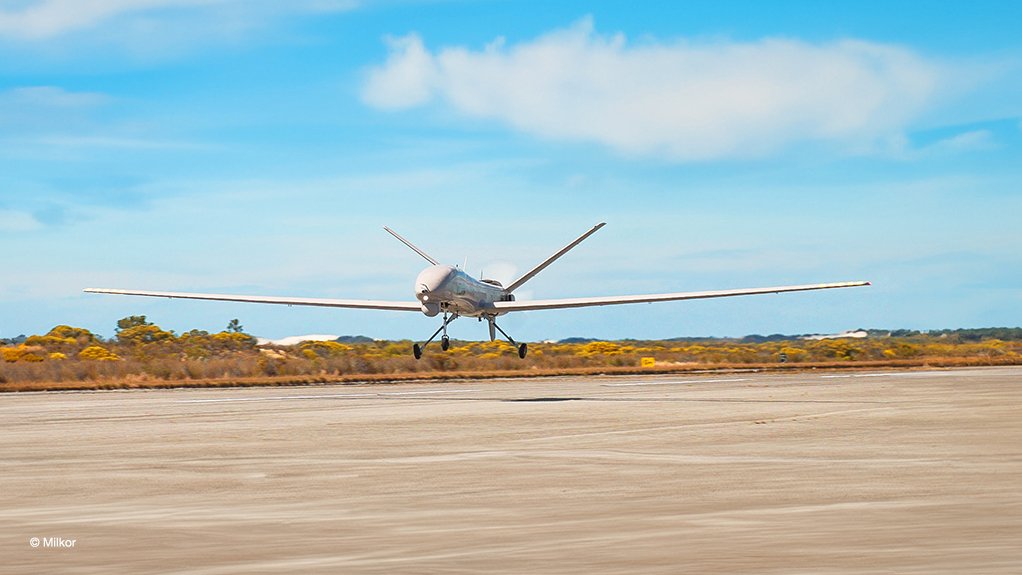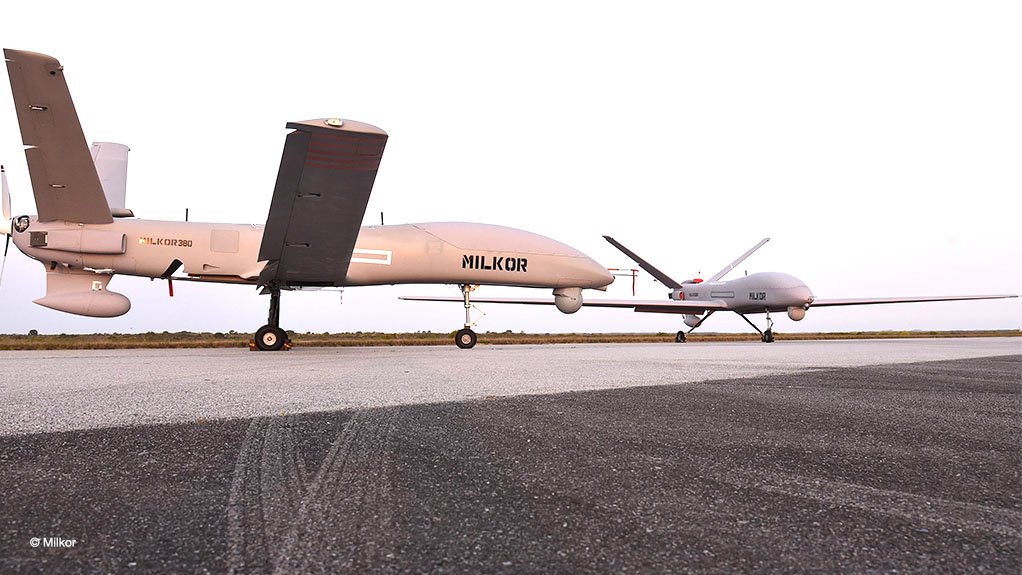South African private-sector defence group Milkor has kept South Africa in the global top ten of larger uncrewed aerial vehicle- (UAV-) producing countries through its development of the Milkor 380 medium altitude, long-endurance (MALE) UAV. Milkor entirely financed the development of the Milkor 380 itself, and is currently producing the first batch of these aircraft, which are the largest UAVs (popularly called drones) ever developed in South Africa.
“We realised that there is a huge market for UAVs,” explains Milkor marketing and communications director Daniel du Plessis. “We had to create a UAV design and production team from scratch. We needed a team that could produce every component needed to build a UAV, except for the power plant. So, we created such a team, but it took a lot of effort, both to retain established skills in South Africa and to recruit new graduates. We started this process in 2019, with one person. Now our UAV unit has 350 employees, 80% of whom are engineers.”
This team has developed the Milkor 380’s airframe, avionics, communications systems, wiring looms – basically every piece of hardware needed to make the UAV – in-house. They also wrote all the requisite software. Only the payloads (sensors and, if required, weapons) and, as previously mentioned, the engine, are sourced from outside the company.
“Because we developed our own software, we can integrate sensors from any third-party supplier,” he points out. “We also developed our own ground control station and line-of-sight communications system, with a range of 250 km, for the UAV. But a satellite communications module is built into the UAV, allowing communications and control over much longer ranges.”
The UAV is quite autonomous in flight but its operations are always monitored by a human pilot. It has automatic take-off and landing capability.
The Milkor 380 is primarily intended for intelligence, surveillance and reconnaissance, maritime surveillance, and border surveillance, missions. In such roles, it has a maximum range of more than 2 000 km and a maximum endurance of 35 hours. It can carry 515 kg of fuel and a payload of up to 220 kg. The payload weight can be increased by reducing the fuel load. Maximum speed is 250 km/h, while cruise speed is from 110 km/h to 150 km/h. Maximum altitude is 30 000 ft (9 144 m), while maximum operating altitude (determined by sensor performance) is 23 000 ft (7 010 m). Normal operating altitude is from 15 000 ft (4 572 m) to 18 000 ft (5 486 m).
But the Milkor 380 can also be fitted with weapons and operated in the strike role. As weapons payloads are generally heavier than sensor payloads, operating it in this manner reduces its range and endurance. Further, Du Plessis cautions, it, like all other MALE UAVs, is vulnerable to modern shoulder-fired surface to air missiles, and so is not meant to be exposed directly to hostile forces in high-intensity conflict. In such conflicts, it should be used only in support roles. However, in low-intensity conflicts, such as currently are the pattern in Africa, the UAV, in the armed role, can provide invaluable cover for troops on the ground.
The Milkor 380 will be on display at the Africa Aerospace and Defence 2024 show, at Air Force Base Waterkloof, just south of Pretoria, next week. It is already attracting significant international interest, not least from other African countries. “It is designed to be a strategic national asset,” notes Du Plessis.
Edited by: Creamer Media Reporter
EMAIL THIS ARTICLE SAVE THIS ARTICLE
ARTICLE ENQUIRY
To subscribe email subscriptions@creamermedia.co.za or click here
To advertise email advertising@creamermedia.co.za or click here















